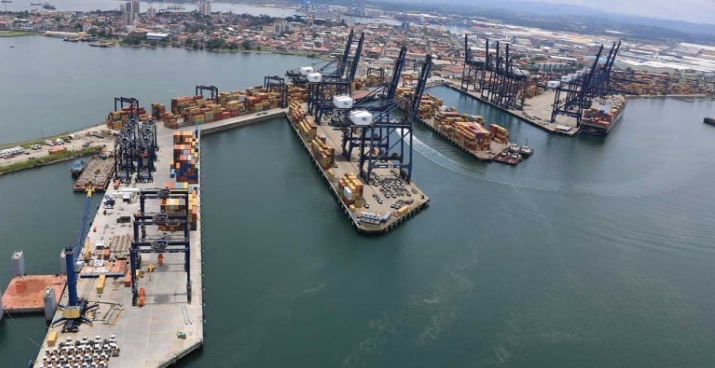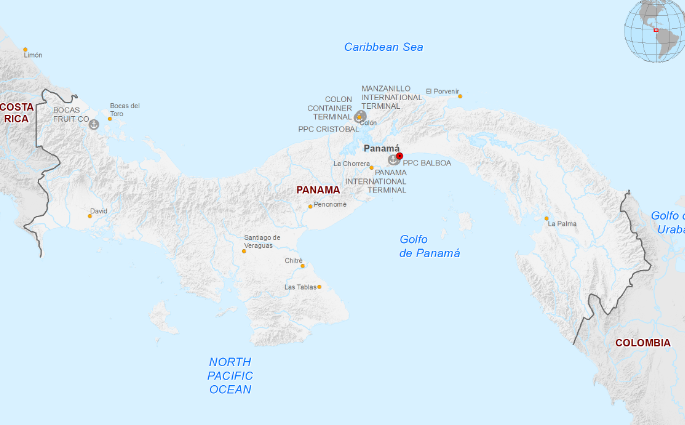Be your Logistics Department in China
Customized logistics solutions, your logistics expert in China
Customized logistics solutions, Shipping from China to the World
Tel:+8613424475220 Email:info@viputrans.com 
On March 4, 2025, Li Ka-shing's Cheung Kong Hutchison Holdings Limited announced that it would sell 80% of its shares in 43 ports in 23 countries around the world and 90% of its shares in Panama Ports Corporation to a consortium led by BlackRock for US$22.8 billion.
BlackRock strikes dealto bring ports on bothsides of Panama Canalunder American control.

***Limited short-term impact, but rising hidden risks
- China has the world's largest port cluster (such as Shanghai Port and Ningbo-Zhoushan Port), and its infrastructure and operational efficiency are world-leading, so the impact on domestic trade in the short term is limited.
- Long-term risks: The United States may impose differentiated charges on China and give priority to US and European ships by controlling the ports at both ends of the Panama Canal (Chinese cargo ships account for 21%) and 10.4% of the world's container throughput, resulting in an 8%-12% increase in China's shipping costs and weakening its export competitiveness.
- Supply chain vulnerability: The transportation of key minerals in Latin America (such as lithium and copper) depends on the canal. If the passage is blocked or delayed, it may cause fluctuations in raw material prices (such as a 10-day delay in the transportation of Chilean copper mines, which caused the price of electrolytic copper to fluctuate by more than 15%).
***Pressure on the shipbuilding and shipping industries
- The United States may impose additional fees on ships flying the Chinese flag or built by Chinese shipyards, squeezing the profits of Chinese shipping companies and indirectly suppressing orders for China's shipbuilding industry.
- Although China accounts for more than 50% of the world's shipbuilding share, the United States has formed a "soft trade barrier" through port control, exacerbating the global supply chain dominance game.
***Control of the Panama Canal's throat
- The Panama Canal carries 6% of the world's maritime trade, and China is the second largest user (accounting for 22.7%).
After the United States controls the port, it may restrict the passage of Chinese ships on the grounds of "national security" and even block the waterway in wartime.
- Strategic data security risks: After the transfer of the port digital system, the navigation data of Chinese ships may be monitored, threatening the security of supply chain intelligence.
***Weakened influence in Latin America
- China's "Belt and Road" layout in Latin America has been blocked. After Panama withdrew from the initiative, the change of port ownership further weakened China's trade fulcrum in the region.
- The United States may copy this model, set off a global port merger and acquisition wave, and threaten China's overseas interests.
***Diversified layout and alternatives
- "De-Panamanization" of logistics networks: China has laid out the Peruvian Chancay Port and the Greek Piraeus Port, promoted the two-ocean railway project, shortened the transportation time to 23 days (originally 40 days), and reduced dependence on the canal.
- Military guarantee: The Chinese Navy routinely cruises the South Pacific and the Gulf of Aden, the expansion of the Djibouti base enhances regional presence, and the Beidou system improves autonomous navigation capabilities.
***Political and economic countermeasures
- China's strategic control over key port resources (such as the Strait of Malacca) and close cooperation with Southeast Asia and Africa form a hedge.
- The country reduces its dependence on the US dollar hegemony system through policy regulation (such as the promotion of RMB settlement) and reduces the financial risks brought by port control.
***Rational attitude at the national level
- The Chinese government did not directly intervene in the transaction because it complies with market rules and there is a "cost-effectiveness trap" in the Panama Canal (high expansion cost and insufficient navigation capacity), so China does not need to take over depreciated assets.
- Although the Hong Kong and Macao Affairs Office of the State Council and the Ta Kung Pao criticized Li Ka-shing for "ignoring national interests", they emphasized that enterprises should recognize the right and wrong and did not take compulsory measures.

We can only strengthen the diversified logistics layout and develop alternative transportation channels.
Arctic route:
Develop an Arctic route with a cost 35% lower than the Panama Canal, shortening the voyage from China to Europe and America.
China-Europe Express:
Improve the efficiency of land transportation, divert the pressure of sea transportation, and reduce the dependence on key waterways. Promote the construction of strategic nodes.
Peru Chancay Port:
As an alternative hub to the Panama Canal, it connects the Pacific and Atlantic Oceans, forming a new land-sea channel from Asia to South America, shortening the transportation time from Asia to South America to 23 days (originally 40 days).
Piraeus Port, Greece:
Strengthen China's logistics fulcrum in Europe and hedge against transportation risks in the Mediterranean region.
As an international logistics supply chain company, we will always pay attention to the current events of international logistics and provide the latest consultation for our customers.
In addition to shipping, if you want to know more about transportation solutions, you can contact me at any time;Phone/Wechat/Whatsapp/Skype: +8618926970495
Our company can provide you with transportation solutions for railways, autos, and air transport.
Shawn.Liao (Mr.) , E-MAIL: sales04@viputrans.com
Copyright © 2003-2025 VIPU Supply Chain Logistics Co., Ltd. | All Rights Reserved
LOGISTICS | E-COMMERCIAL FULFILLMENT | ABOUT US | CASE | NEWS | VIDEO | CONTACT US
We will find the fastest or the cheapest way for your shipment. Please specify: where from, where to, what to ship.